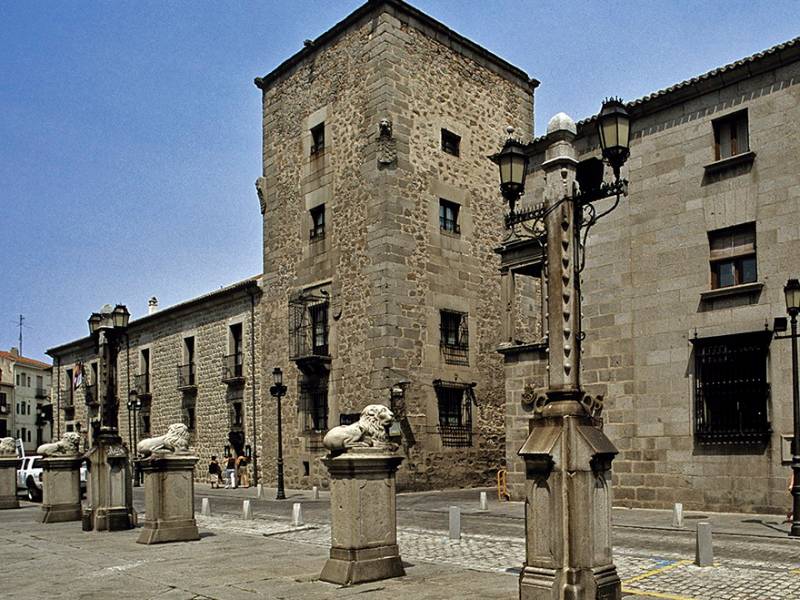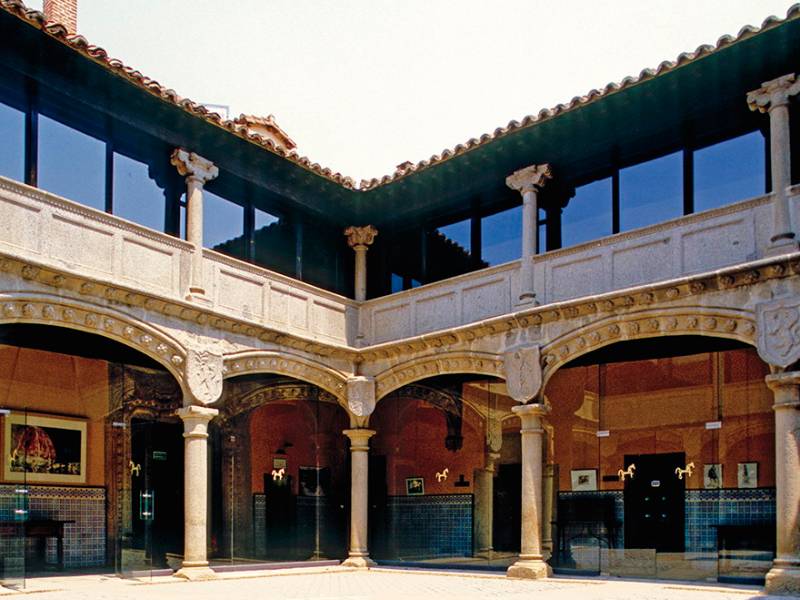Avila palatial
- Position
- Ávila
- Type of route
- One day
- Web
- To know more
In the late 15th century and throughout the 16th century the city of Ávila enjoyed its golden age of social and economic splendour, reflected in the evolution of its civil architecture, with many splendid fortresses and palaces built in various styles ranging from Late Gothic to the Renaissance, requiring the restoration or demolition of the ancient medieval houses.
Most of them are located within the city walls, following their layout and forming a second line of defence. They are attached to the walls or built to form squares around the city gates.
This route takes in the Monastery of Santo Tomás, the Palace of Blasco Núñez Vela, the Palacio of the Almarza Family, the Palace of the Superunda Family, the Fortress Palace of the Guzmán Family, the Palace of the Dávila Family / Abrantes Palace, Valderrábanos Palace, the Palace of the Velada Family, the Episcopal Palace, the Palace of the Águila Family or Don Miguel del Águila, the Palace of the Verdugo Family, the Palace of Santa Cruz or Bracamonte, The Palace of Don Juan de Henao or Benavites, the Palace of the Polentino Family, the Butchers’ House, the House of Mercy, the Deans’ House and the Palace of the Serrano Family.


